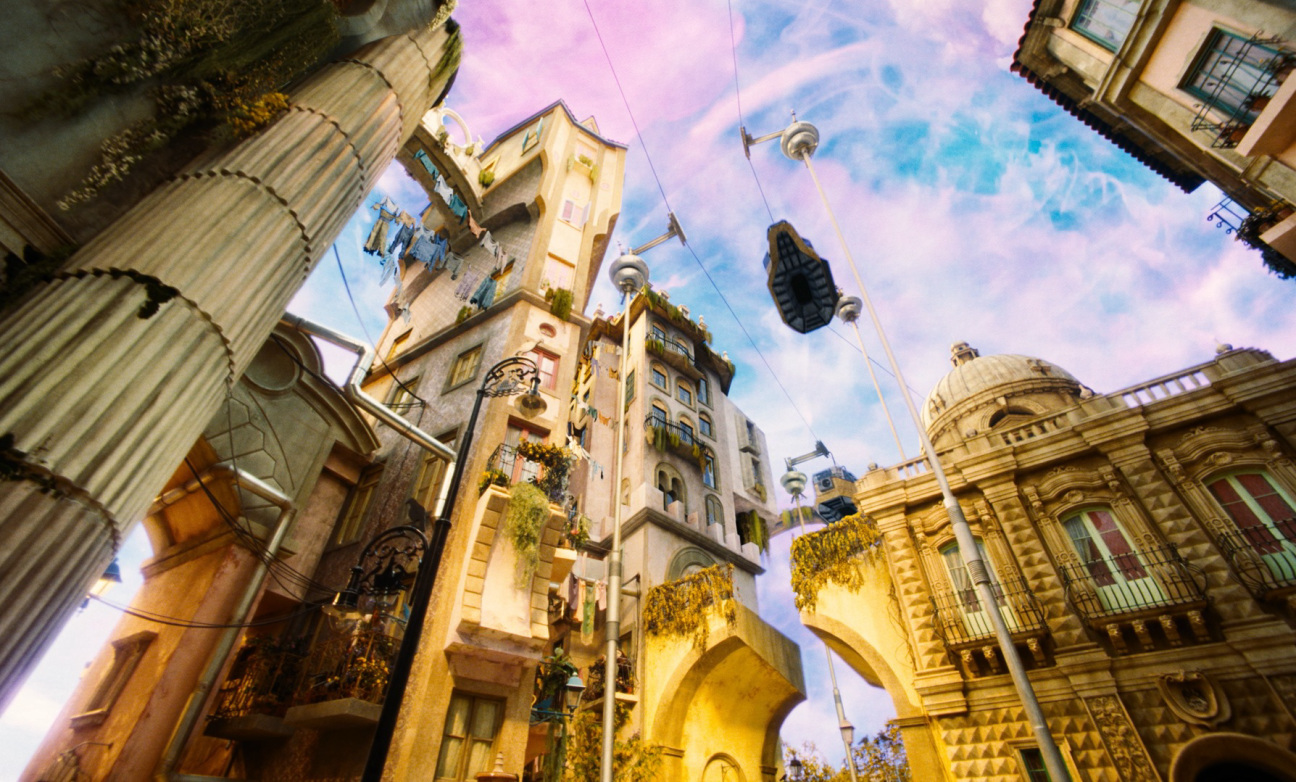
Tomorrow, Shona Heath and James Price will make their way to the Dolby Theatre in Hollywood for this year's edition of the Oscars, where they will compete against a roster of industry heavyweights like Sarah Greenwood and Katie Spencer (Barbie), Jack Fisk and Adam Willis (Killers of the Flower Moon), and Arthur Max and Elli Griff (Napoleon) for the Academy Award for Best Production Design.
The British power duo may share a brain after years of work on the Yorgos Lanthimos-directed, Emma Stone-led sensation Poor Things, but in 2019 they were unknown territory to each other. Heath had made a name for herself as the surrealist doyenne of the fashion design world, crafting fantastical sets for the likes of British Vogue, Acne Studios, Lanvin, and Harper's Bazaar. Price cut his teeth on more true-to-life fare in the film circuit, working on features like The Nest, Bullet Boy, Kill Your Friends, and most recently The Iron Claw. Their puzzle-piece pairing was a coup however, as the high-octane, exquisite-corpse nature of the resulting film's design has inked itself in the visual history of the 21st century. No matter the verdict on Sunday, the palette, precision, and playfulness they wove into Poor Things is sure to have an impact on the worlds we daydream for a while.
To mark the occasion, Heath and Price sat down with CULTURED to unpack their wild ride through the world of Bella and Godwin Baxter.
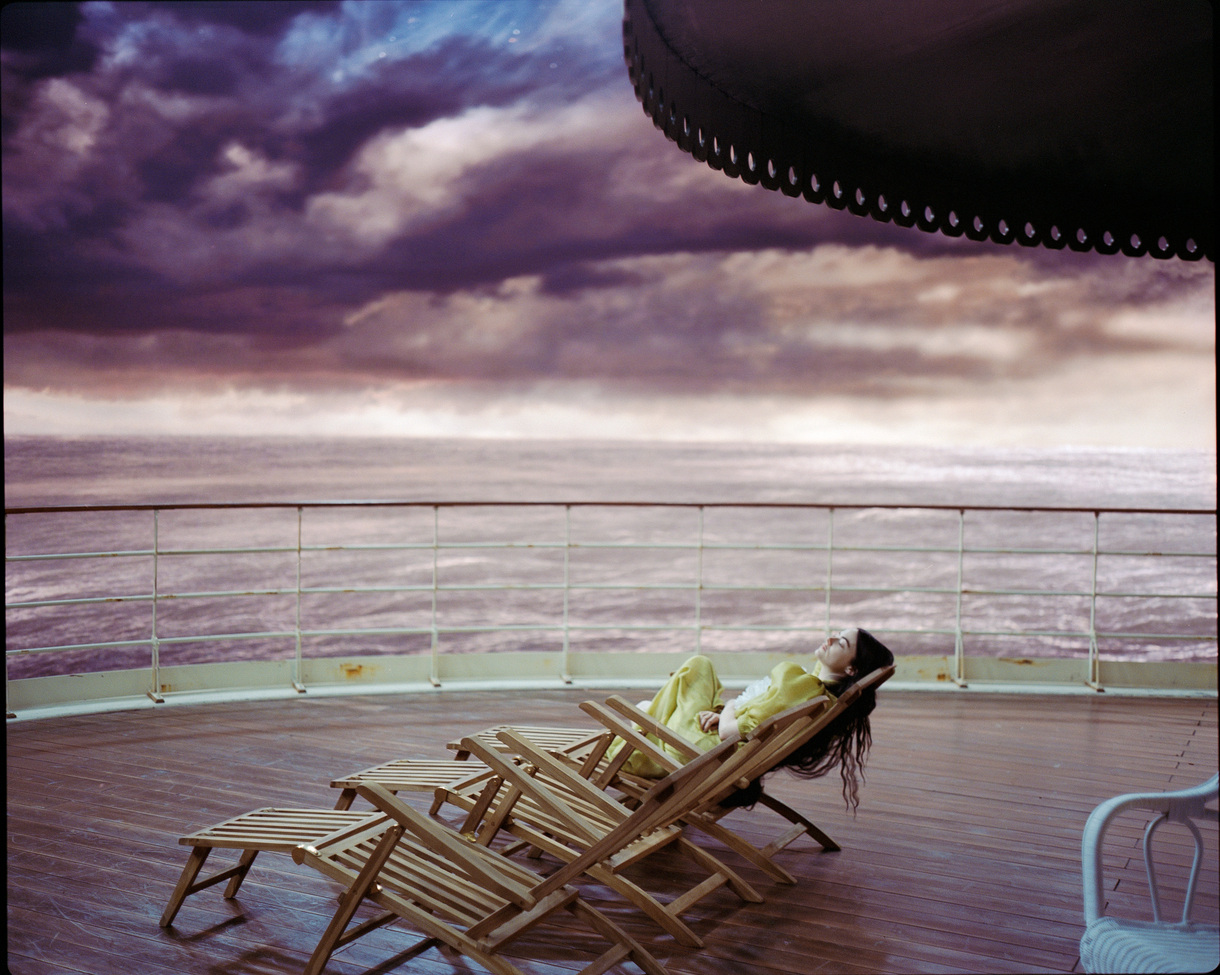
CULTURED: You had never worked together before Poor Things, and Shona, you hadn't worked in film before at all. How did you break the ice creatively, and what surprised each of you in working together?
Shona Heath: Breaking the ice was probably the biggest challenge for both of us. Neither [of us] has collaborated on this level with somebody. What I do in fashion is hugely collaborative, but not on the same plane. We were both quite apprehensive, but James came to my studio, checked out I wasn't mad, and we got on really well from the beginning. We just went straight into the script, and very quickly, it was apparent we weren't going to have problems with each other. We had work to do; that was the bottom line, so we got on with it.
James Price: Since we come from very different backgrounds, there wasn’t a potential for conflict as there might have been if we were too similar. There was so much to design. If it was a project where we only had [Godwin] Baxter’s house to do, then maybe we’d have been questioning decisions a lot more. Because it was so vast, we didn’t have time to really question anything. There's stuff that made it onto the set that was just part of the 3-D model placeholders. We were like, “Oh yeah, we'll come back and deal with that another time.” Next thing you know, it's been made out of metal, and it's on the set, painted.
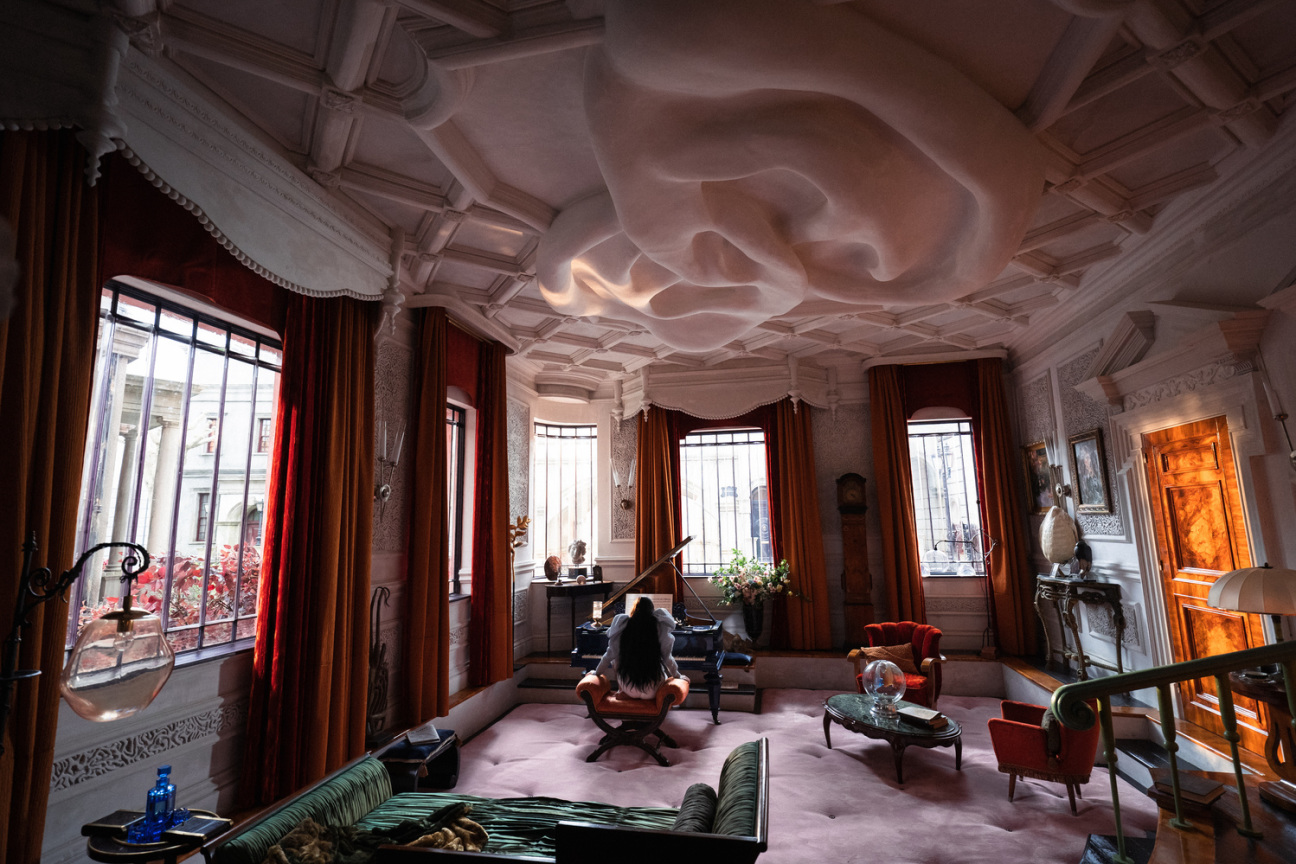
CULTURED: How did you take that sort of surprise appearance?
Price: It didn't matter, because [in] the craziness of Poor Things, it was totally fine. It was just surprising sometimes.
Heath: Also we'd had such good concept art done. Jonas [Vonk] had done such a good job of the lights, so whatever the placeholder was looked pretty good.
Price: The other thing I was surprised by [was] Shona’s creative ability. I always thought that I had a quick brain, but the way her creative brain works was like boxing with Mike Tyson for 10 rounds a day. You were just being hit by these continually incredible surrealist ideas and would be like, “Where is it coming from, man? This is unbelievable.”
Heath: And James's ability to run a team and get the best out of every single person is second to none. He's really open-minded and creative and trusts people. I've always been a bit of a control freak over design or creative process, and James is so inclusive. That's what builds and makes these worlds for real. Without him, it would never have materialized. He’s a very special man.
Price: You're gonna make me cry.
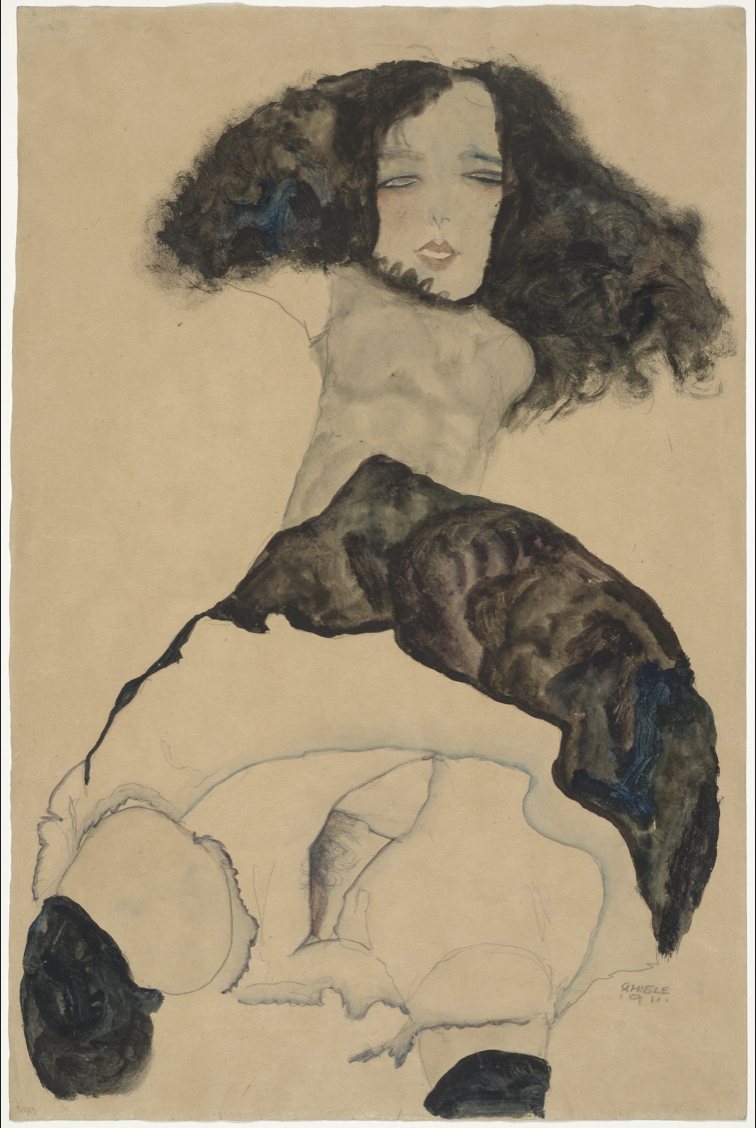
CULTURED: Yorgos Lanthimos’s script was obviously a starting point for the set design. He also gave both of you references to works by Egon Schiele, Hieronymus Bosch, and Francis Bacon. What else did you surround yourself with during the early stages of this process?
Heath: Bella's character—trying to pinpoint what she was like. We were looking at pictures by John Singer Sargent and cutting them up with all sorts of things. Her world had to suit her. I really felt like I had to see Bella before we could see the world. The Egon Schiele reference that Yorgos gave us—which was with Girl with Black Hair, 1911—that was the biggest surprise. I had never imagined Bella with black hair, and it was just about the most genius call.
Price: We created this DNA document in our first concepting phase. It was in bite-size chunks, one of the reasons being the pandemic. That document laid out characters, then Baxter's house, and the animals. We concepted everything from scribbles and collages up to 3-D models, which were beginning to get rendered and needed a huge amount of work to figure out what the world was. That then was used to budget the film and say to the financiers, Searchlight, “This is what we're gonna do with this huge amount of money you're gonna give us, it's gonna be bonkers.”
CULTURED: Shona, you brought up the concept of collaging, which was obviously so important in terms of the way you created Poor Things’s ecosystem. It reminds me of the Surrealist exquisite corpse game. At what point did this technique arise?
Heath: That came up quite early actually because like James said, we had to do a scatter bomb approach to sell the visuals to everyone. It wasn't even a decision: it just came out of necessity. Then, instead of blurring the lines and overlapping, we kept that collage approach to give it the brutalist edge that appears in the film. We didn't try to hide it.
Price: It comes from the character of Baxter and what he’s done to his animals. That's his thing, and it rolls out through the whole world. It's very much Bella's world, but he created her. So in some ways [it’s] Baxter's world as much as it is Bella's.
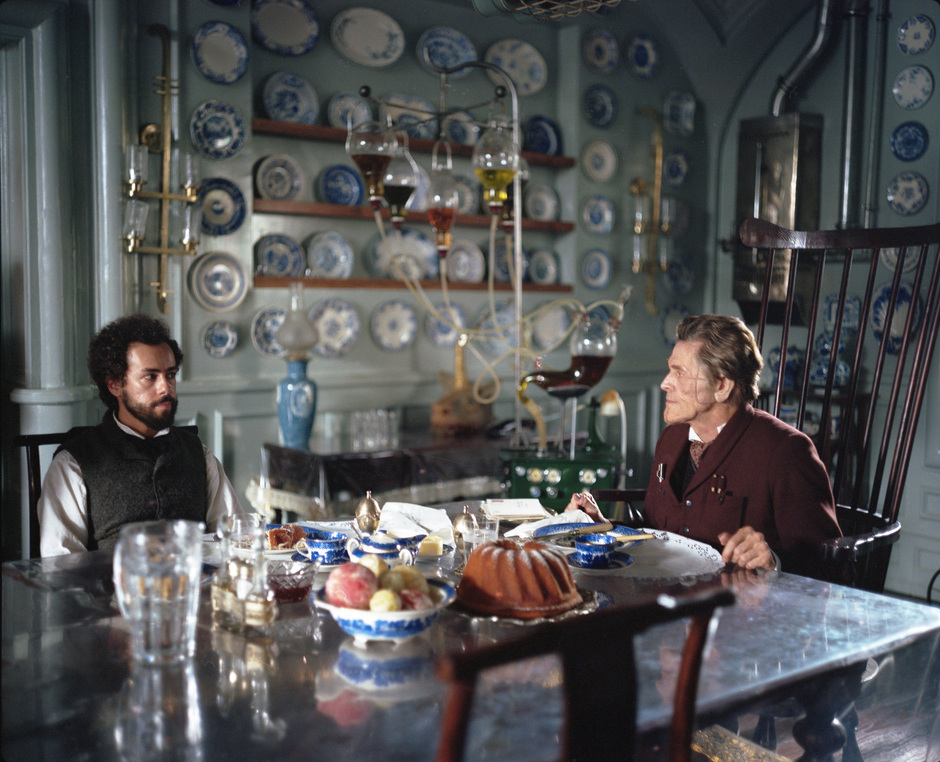
CULTURED: How did you deal with Bella’s passage from the interior to the outside world?
Heath: We were very concerned with how she would travel. If she traveled on a train or a plane, we'd have really cemented the time it was set in, and we really didn't want to. That was a bit of a turning point when we decided that Bella could go to Lisbon on a fish, and then to Paris on a slice of brain. Once we established those, it felt like her world could be much more fantastical and unusual. We weren't trying to make it look real because we had the gift of Bella's vision.
CULTURED: Texture was very important for you, especially in the first act, which is filmed in black and white. What was the most unexpected texture you found yourself experimenting with?
Heath: The roof of the atrium in Baxter's house. We designed it as the roof of the mouth, like a sand dune on the ceiling. It was very high and very expensive to try and do something in plaster. The guys in Hungary—I think it was Adam, our supervising art director—experimented with this simple packing foam, ruching up very thin polystyrene. It was amazing, wasn't it? That was a really difficult thing to achieve.
Price: It was one of the most rewarding things because it went from like, “Oh, we can't afford the ceiling at all” to “Yeah, that only cost 200 quid.”

CULTURED: How much of a dialogue were you in with Holly Waddington, the costume designer?
Heath: Holly was just fantastic. She was always checking in with us about colors and textures to complement or play off the rooms or worlds that [Bella] would be in. That communication and openness was really key, because you could have lost Bella in some of those worlds had the clothes not contrasted. Holly really got on board with our idea of using textures that felt bodily and weird fabrics and plastics that were very futuristic. She really ran with it. There's a sort of symbiosis with the set, but not so much that it all becomes too contrived.
Price: You believe completely that those costumes are part of that world. That further translates onto the music that Jerskin [Fendrix] did as well. You watch it, and it feels so complete, which is great. I've worked on other stuff where you're like, “Well, I thought we were doing this,” and everyone else seems to have been doing something else.
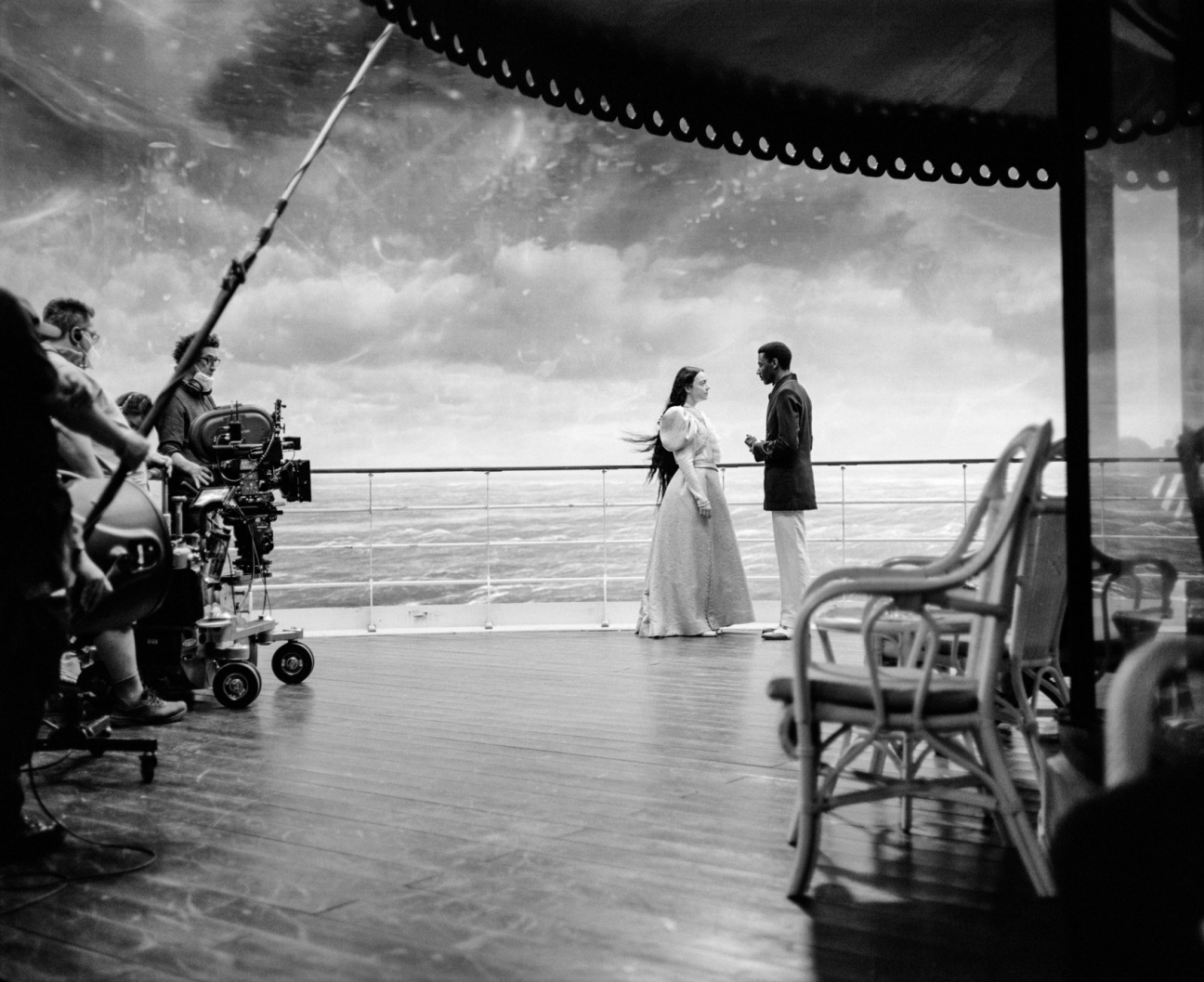
CULTURED: If you could add one more city to Bella’s journey, what would it be?
Price: Tokyo. We should have done Tokyo.
Heath: I'm gonna say a city in the sky.
CULTURED: And if you could live in one of the sets you designed, which would you pick?
Heath: Baxter's house without a doubt. It was a beautiful place to be, with natural light streaming in everywhere. Robbie [Ryan, the DP] and Yorgos didn't want to use lights in the house and just have as much daylight as possible. It felt gorgeous to be in. It makes me really sad that it's gone.
Price: Although you'd have to put a bathroom in. There would need to be improvements before I’d move in there.
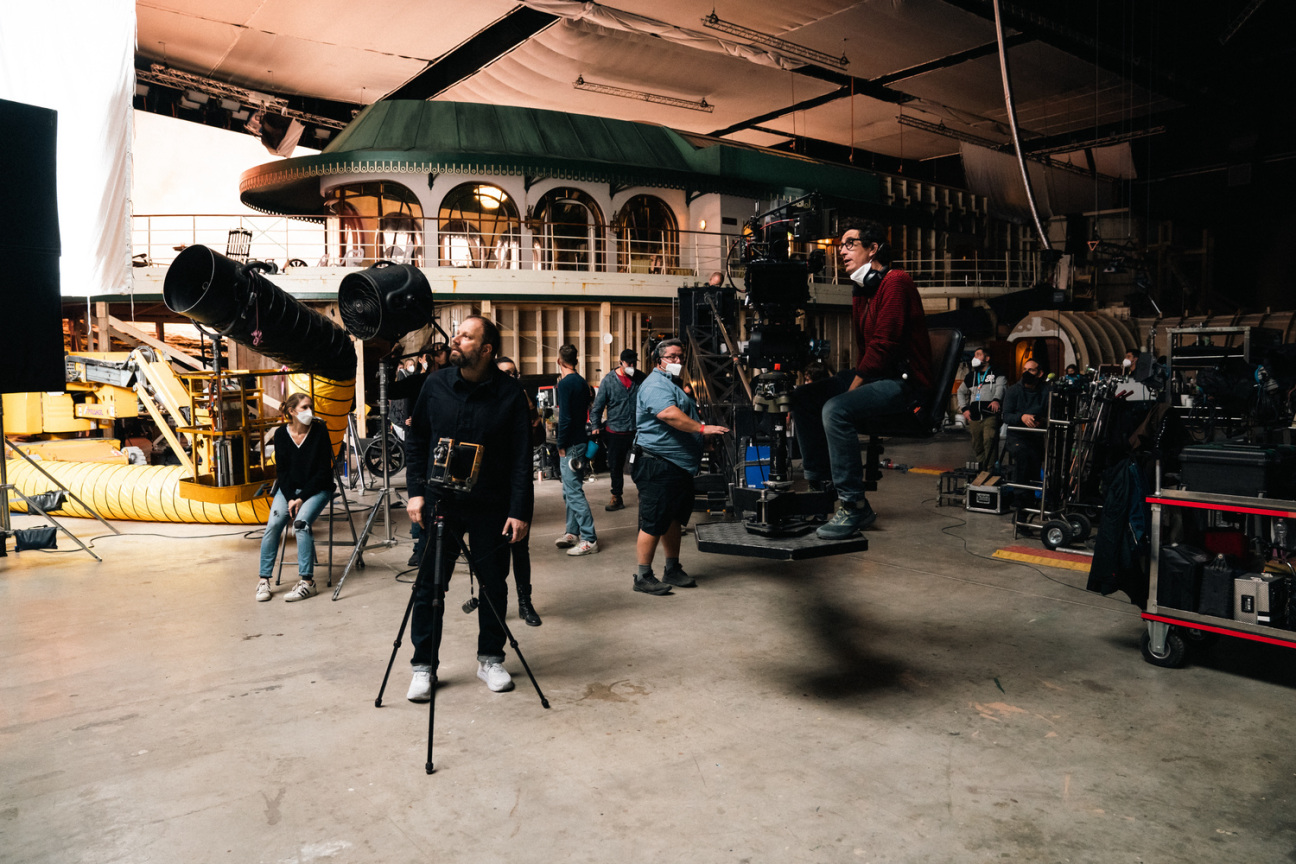
CULTURED: Where were you when you got the Oscars nomination news? What was your first reaction? Did you call each other?
Heath: We didn't call each other up. I think we were a bit shy about the whole thing. A few hours later we spoke and were like, “Oh my God.”
Price: Shona rang me up and said, “I don't know what to say to you.” Then we carried on the conversation. It was just too big to comprehend for quite a long time.
CULTURED: Do you feel ready now?
Heath: I don't know what “ready” means. James is raring to go. I think it's with trepidation and the really big likelihood that we'll be disappointed. There's so many brilliant films in our category.
Price: It will be pretty bittersweet. With the actors’ strike and the writers’ strike, we were brought into this process earlier than we would have been. So, Shona, myself, Holly, and Jerskin have become a very tight friend group. This is the end of the road, right? I read something where Yorgos said that he put two people together and made a superhuman, referring to [Shona and me]. I was like, “That’s an amazing way to describe it.”










 in your life?
in your life?

